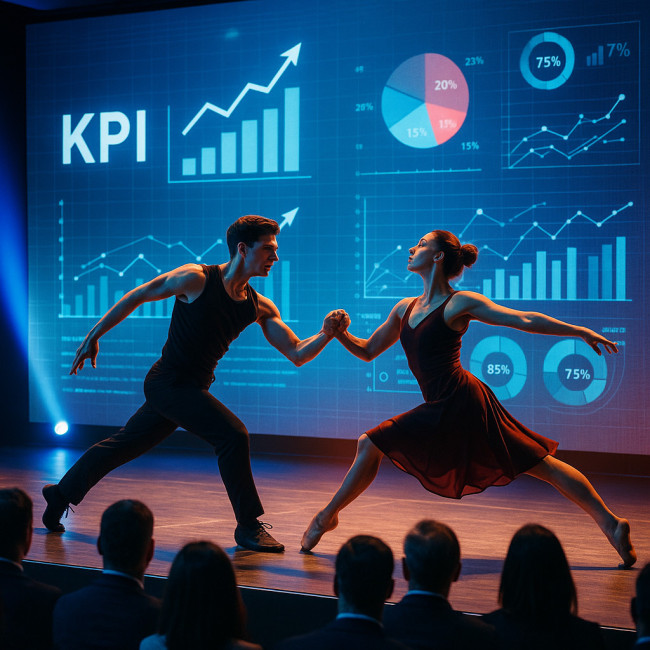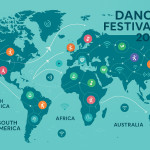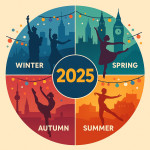How to pitch your dance act for corporate events and secure long-term partners
Landing repeat corporate bookings is less about flawless pirouettes and more about solving business problems with emotion-filled movement. In this guide, you will learn how to research prospects, tailor a pitch, quantify value, and turn one-off shows into multi-year partnerships—step by strategic step.
1. Understand corporate decision drivers before you pitch your dance act
Event managers juggle ROI, brand fit, and risk. Before sending any deck, map these three factors:
- Audience mood goals: product launches demand high-energy hype, whereas leadership retreats crave reflective pieces.
- Brand guidelines: colour palettes, slogans, diversity policies, and sustainability pledges shape approval.
- Budget windows: Q1 kick-offs often have larger discretionary spend than end-of-year wrap-ups.
Scan the corporate event dancer directory for clues on common themes, rates, and technical specs already in demand.
2. Build an irresistible value proposition
Connect artistic flair to business KPIs
Translate choreography into metrics executives respect:
| Artistic Feature | Business Benefit | Evidence to Share |
|---|---|---|
| Custom-branded costumes | Logo recall & social media visibility | Past campaign hashtags, UGC numbers |
| Interactive segments | Higher attendee engagement scores | Live poll or app analytics |
| Sustainably sourced props | ESG alignment | Supplier certifications |
| Post-show workshops | Team-building retention | Survey feedback averages |
Package, tier, and price for clarity
Offer three tiers—Essential, Signature, and Immersive—to match varied budgets. Clearly list:
- Duration and number of performers
- Technical requirements and who supplies them
- Add-ons (workshops, meet-and-greet, branded video snippets)
- License terms for internal or external distribution
3. Craft the pitch deck
Keep slides minimal: 10–12 is the sweet spot. Essentials:
- Opening hook: a 20-second sizzle reel respecting 2025 self-tape specs.
- Case studies: two corporate events with quantified outcomes—“Increased booth dwell time by 35 %”.
- Risk-mitigation slide: insurance, safety protocols, and contingency crew members.
- Next steps: timeline from green light to premiere.
4. Deliver the pitch live or online
In-person meetings
Rehearse a 3-minute verbal storyboard. Bring a tablet with the reel pre-loaded (no buffering). Wear brand-neutral attire so the focus stays on the act, not the dancer.
Virtual demos
Optimise for bandwidth: export your reel at 1080p, 8 Mbps. Use live Q&A to address budget fears and refer to engagement metrics that prove suitability.
5. Negotiate win-win contracts
After a positive pitch, move fast. Send a concise proposal within 24 hours that includes:
- Scope of work: dates, venues, rehearsals.
- Payment milestones: 50 % on signing, 25 % tech run, 25 % show day.
- Exclusivity clause: limit only where essential (e.g., same industry within 30 days).
- Renewal options: multi-event discount triggers automatic extension.
6. On-site excellence turns gigs into long-term partners
Corporate planners remember proactive artists. Deploy these tactics:
- Show-caller check-ins: arrive during stage build to confirm marks and cues.
- Risk audits: verify flooring, cables, and backstage routes; share findings with production.
- Branded recaps: deliver a 30-second highlight clip within 72 hours—ideal for company socials.
Consistent professionalism is why brands commit to multi-year agreements, as covered in corporate wellness dance frameworks.
7. Post-event follow-up sequence
- Day 1: Thank-you email + performance stats (applause meter, engagement app hits).
- Day 7: Survey link requesting Net Promoter Score (NPS) and testimonial.
- Day 14: Proposal for the next milestone—holiday gala, product roadshow, or internal workshop.
Document every data point in a tracker so you can react quickly when planners revisit budgets, echoing the speed tips in rapid profile scanning.
8. Metrics that prove long-term value

When discussing numbers, paint the scene so executives can visualise impact: imagine an elegant duet leaping as bar graphs animate behind them, each lift coinciding with a spike in engagement or revenue. That visceral link between motion and metric rewires how stakeholders remember your value proposition. By translating abstract spreadsheets into emotional visuals, you elevate the conversation from cost to investment. Use that same storytelling rhythm when framing the three KPIs below so planners feel the lift before they read the figures.
- Repeat-booking rate: target 60 %+ within 18 months.
- Average revenue per client (ARPC): monitor upsells—workshops, licensing, travel shows.
- Referral count: track introductions to other divisions or partner companies.
Mini-Quiz: Are you partnership-ready?
FAQ
- How long should my corporate dance pitch reel be?
- Keep it under 90 seconds; planners watch dozens of clips and decide within the first 30.
- Do I need special insurance for corporate venues?
- Yes. A minimum of €2 million public liability cover is standard in Europe. Always attach the certificate to your proposal.
- What if the company wants exclusive rights to the choreography?
- Charge a licensing premium and set a clear time limit—usually 12 months—after which you can repurpose the piece.
- How early should I pitch for an annual conference?
- Six to nine months out is ideal; large corporations finalise entertainment budgets during that window.
Take the next step
Your next corporate partner is already browsing talent lists. Refresh your profile, refine your pitch, and apply today. Ready to put these tactics into action? Reach out, book a strategy call, and start turning applause into enduring revenue.











